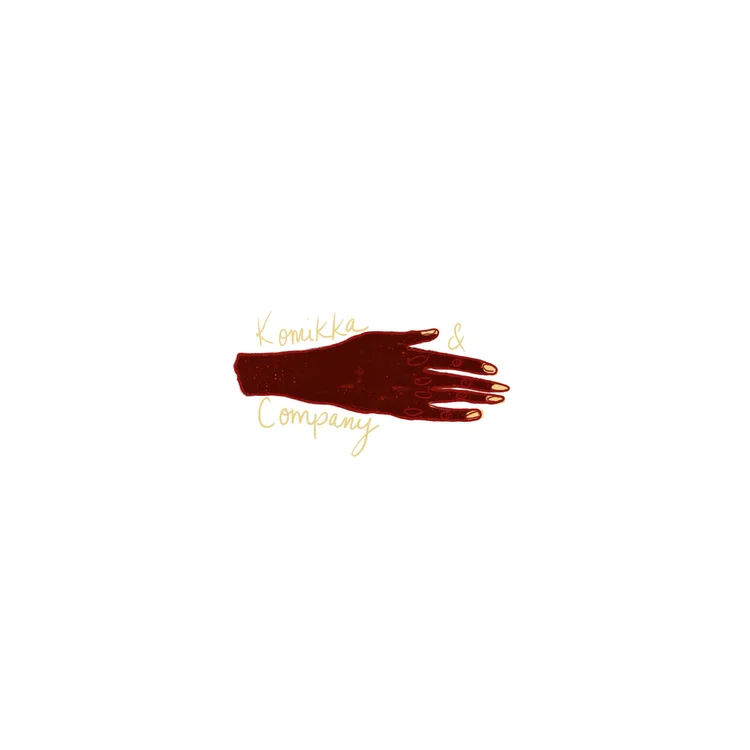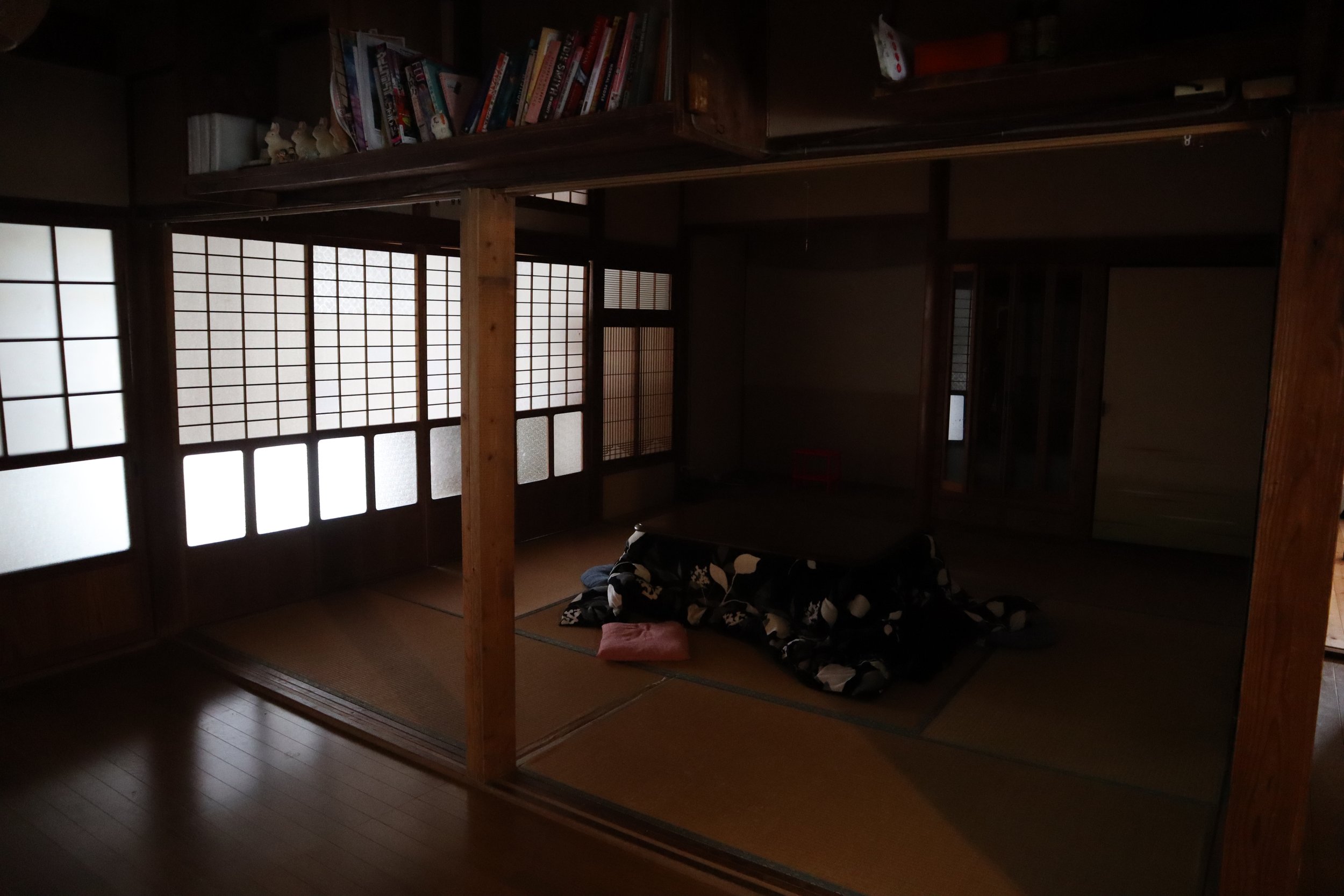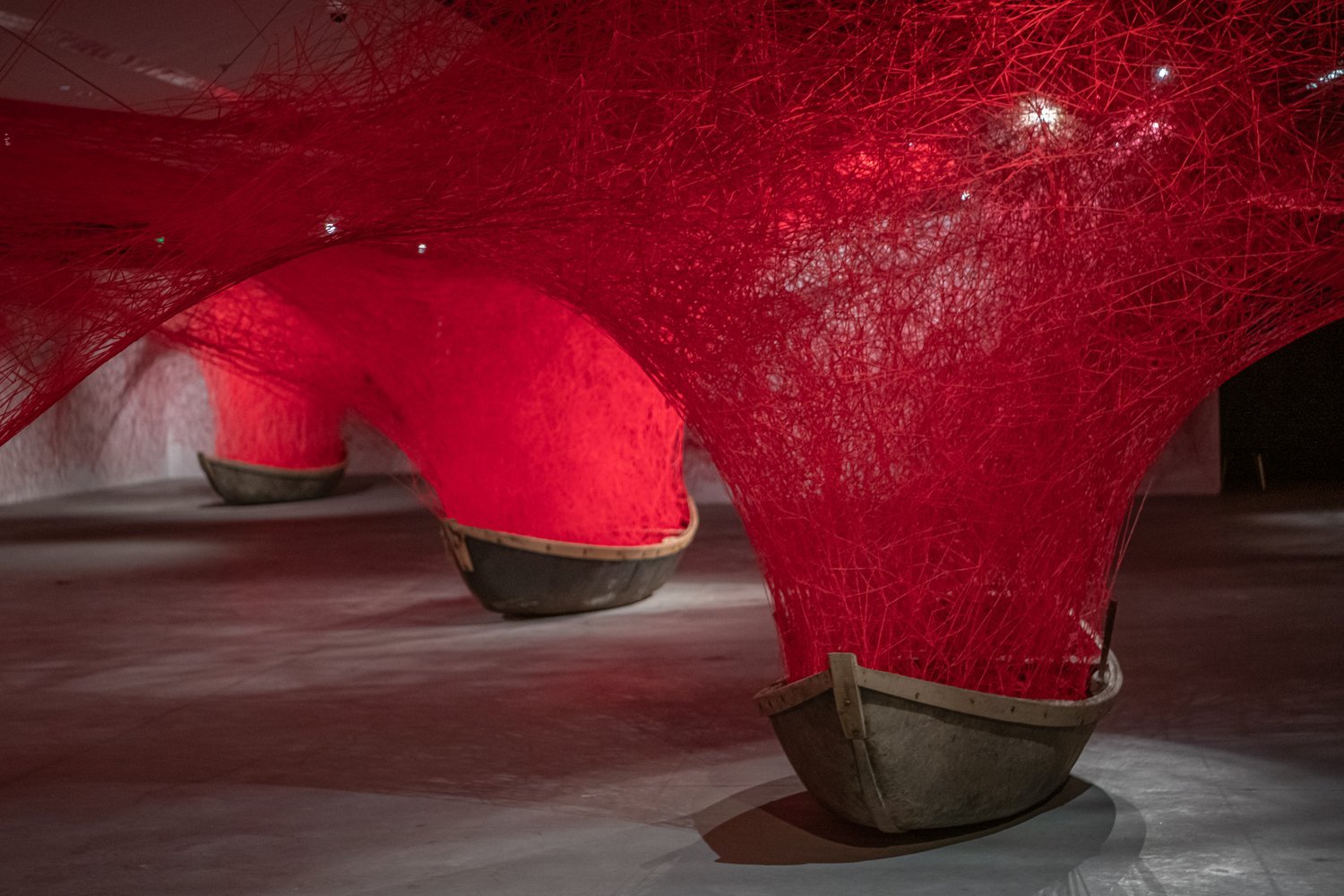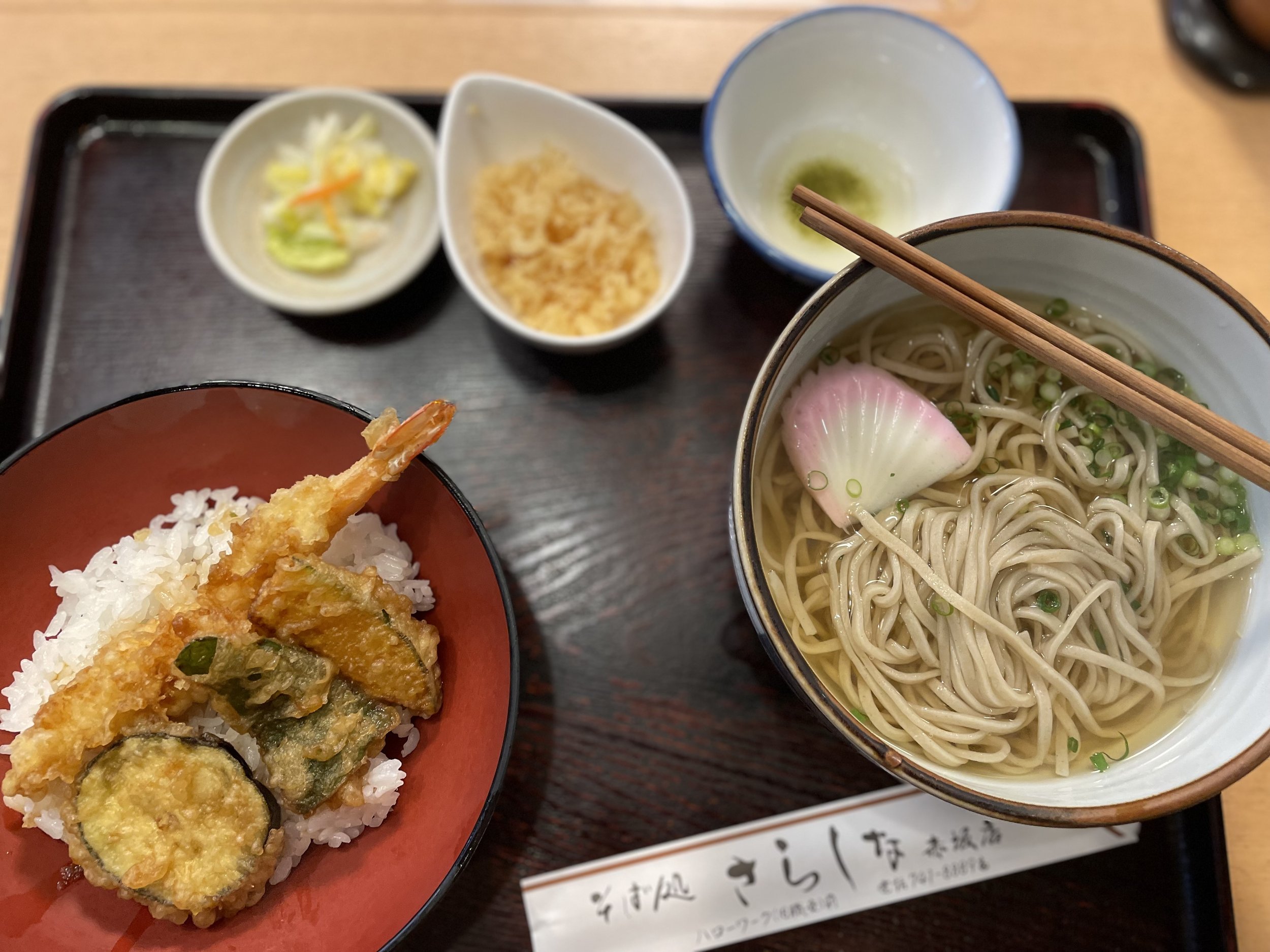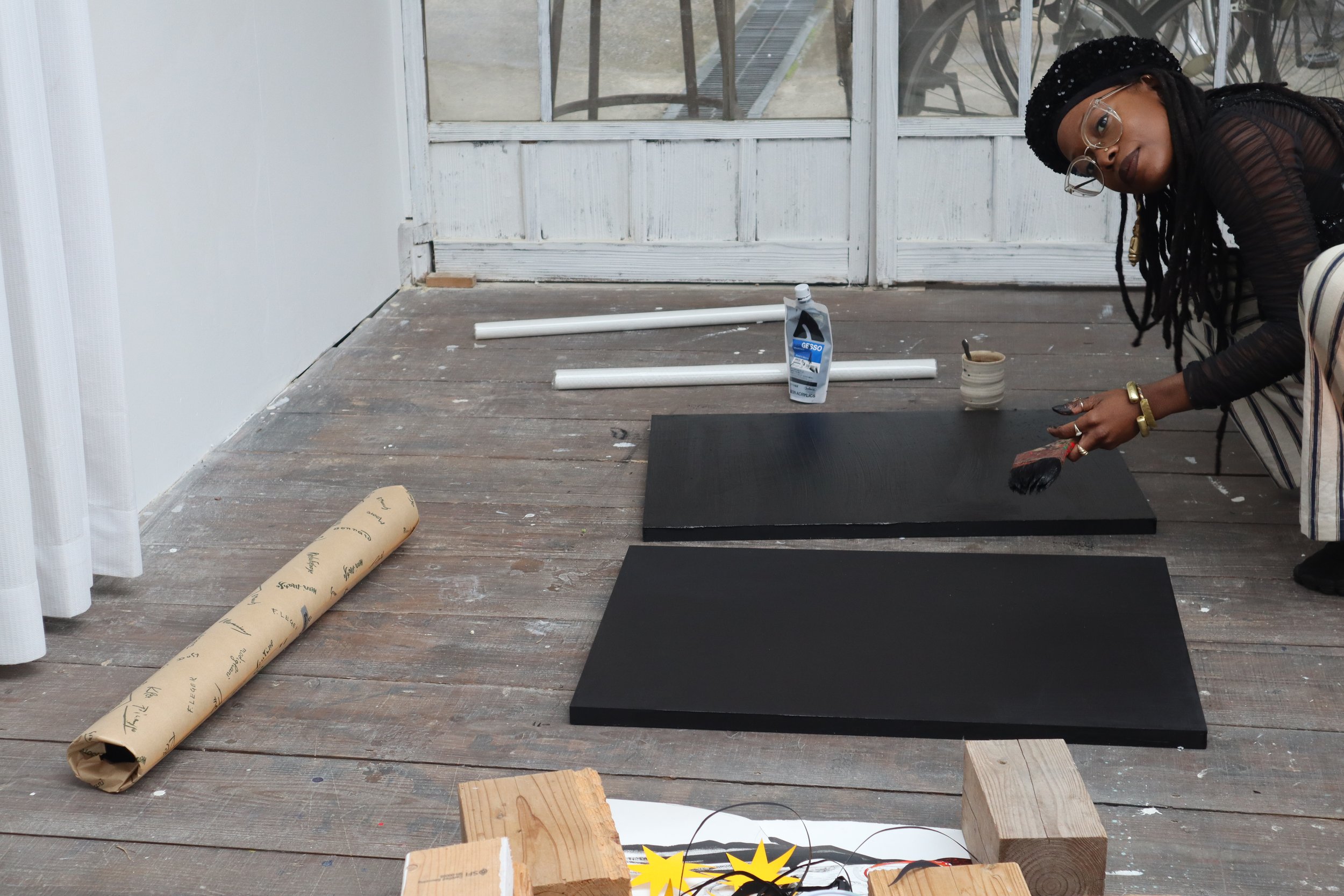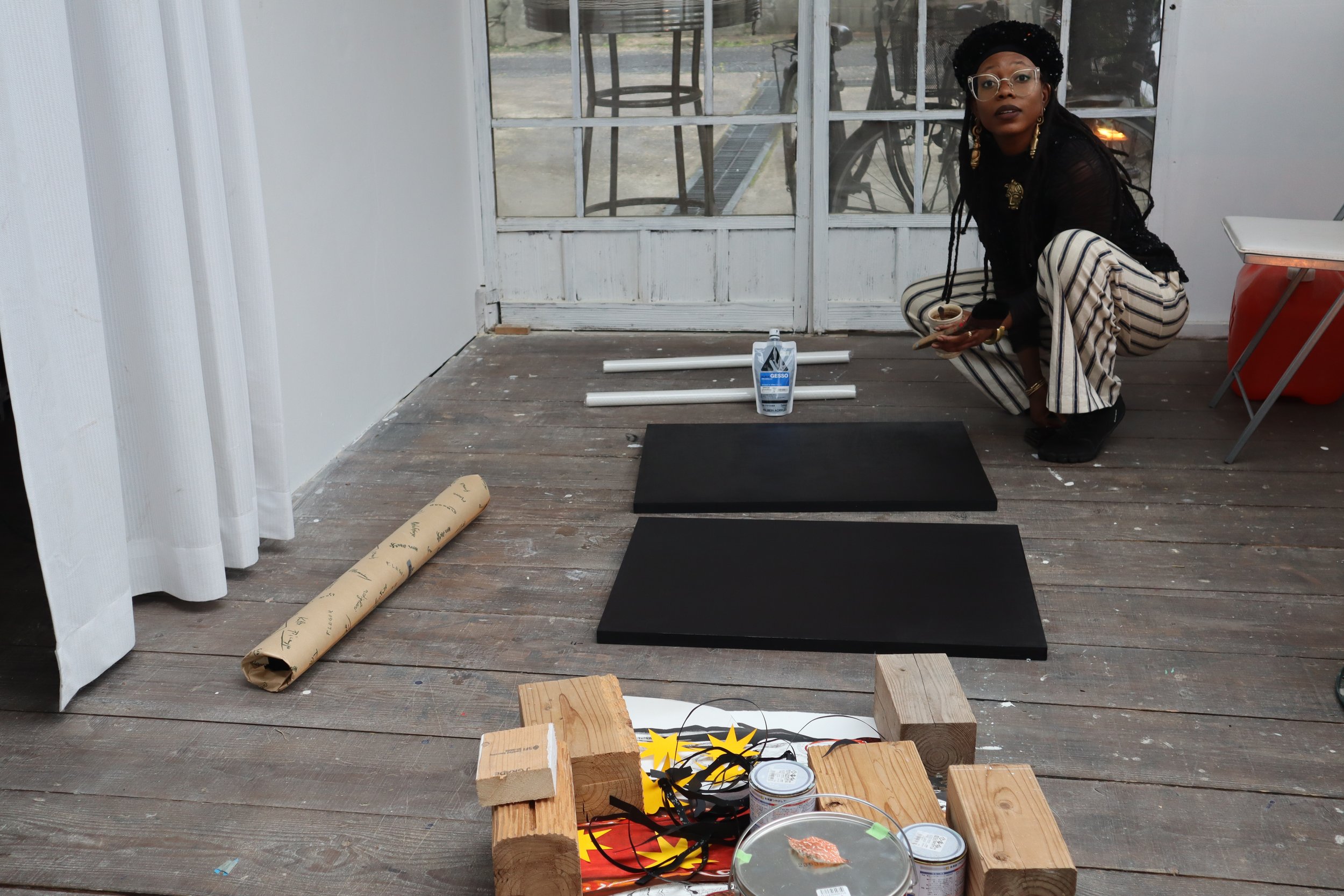“As I embark on a new adventure I am brought back to my roots.”
- Komikka
Welcome to the Studio with Komikka! Through this channel, one of my goals is to combine collaging and journaling. Some of my most personal profound moments have been with pen and paper, whether ascribing things that have been introspectively in rotation that later become titles for pieces or an exercise to mentally clear space. Writing is a fundamental process in my healing work. Sketching and drawing follow, and then the collaging is the final installation of all these foundational aspects coming together. In the art of making—writing, drawing, and collaging go hand in hand: all of these creative fields invite honesty, vulnerability, and passion.
Collage Art is one of the most thrifty and healing techniques of creation: giving the opportunity to cut, paste, create, and destroy—all while world-building. Old leaflets, tissue paper, magazines, and scrap paper can be manipulated and transformed into beautiful Art. It's also one of the most sustainable art forms: all you need is an idea, paper, an adhesive, and a pair of scissors to get started. As collages are a flexible medium, the ability to create from old drawings, prints, writings, and creating harmonious compositions inspired by the natural world—around or within—is wonderfully healing. I draw inspiration from my experience and choose to focus on aspects that represent my humanness applying creative and expansive techniques with life’s journey. Collage Art is a perfect place to start developing artistic skills, thinking outside the box, and creating worlds that allow access beyond confinements and limitations.
The Seed Heads to Japan
Studying at Studio Kura in Fukuoka and Artist Residency in Japan; I’ll be walking distance to the Sea, the Mountains, rice fields, and Shinto shrines! Fukuoka houses one of Japan's oldest and most sacred shrines, Munakata Taisha Shrine, along with numerous shrines within the rural municipality.
Goal in Fukuoka: To Be and observe, absorb, experience, and create in an environment that nurtures and supports growth.
Growing up in a spiritually-gifted family in North Carolina, the unseen and engagement with what some would consider taboo was accepted, feared, and celebrated. We understood and had the ability to seek spiritual direction and relief from healers, medicine women, and comforters. We incorporated charms, amulets, baths, oils, and prayer into our day to day, celebrating history, knowledge, and faith! All of these elements added to my interest in visiting a place also shrouded in faith and spiritual connection. I saw similarities in practices and celebration. My work highlights these connections through narration, storytelling, bits of grandma, the occult, and beyond; Japan offers another lens in which to see these things.
I can say, honestly, I am not a big fan of landscapes, but Shintoism has transformed how I see nature. It has deepened my desire to personify and venerate landscapes and locations to add conceptual content and symbolism. This further shows sacredness through moods, seasons, and nature.
Taking Work Overseas
I am an artist and drawer at heart and this has helped me when traveling abroad without breaking the bank on shipping costs. Paper and Pen can be found anywhere and what’s super cool about traveling is that a lot of places specialize in their own paper. There is so much to discover in the world of paper from material, texture, and thickness. Paper has so much flexibility; it is durable and yet fragile—able to bend and fold, be cut, torn, stitched, glued, painted, and so much more. All throughout the years, I have had some intense learning curves when it comes to transporting paper, installing paper (without framing), and keeping drawing exciting. Because of these experiences, I've gathered some paper traveling tips:
Buy those adjustable plastic tubes for drawing at your local art store (mine are from Blick). No need to pay for shipping! During air travel, you can have them as a carry-on! Caution! When traveling internationally they will open it and look inside. I would NOT recommend over-stuffing or wrapping it in film. The good thing about buying quality paper is the ability to iron it. Also you can place paper between boards and add weight to straighten it out. Try leaving it under a weight for as long as you can.
Favorite Paper:
I look for printmaking paper which is usually paper that can hold up to water, preferably 100% cotton or some natural material.
BFK Rives, Arches, and Stonehenge are my favorite universal papers. BFK Rives has a bit of tooth (texture) but is soft; it is great for blending and ink work. Arches is also great for this and Watercolor paper in various GSMs (grams per square meter), which determines the weight of the paper. Stonehenge is less expensive and smooth.
If you are interested in paper with various weights and fibers, some brands offer sample packets of different papers to experiment with (a great idea for collaging and gift ideas when traveling). A great thing about durable paper is its capacity of being ironed! This is vital for presentation and uncurling (straightening) paper after packing, transporting, or for style.
Things to consider when looking at paper:
Texture
Press
Shade
Quality
Weight
Sizing
Paper Glossary
Hot Press: Smooth surface.
Cold Press: Slight texture on surface which allows for a variety of mark making.
Rough: Rough surface – not the best for detailing – but great for complex mark making.
Shade: Color of the paper. Paper comes in all different colors and so many shades of white, from bright-bright white to cream and beige. Definitely something to consider when choosing how to best represent your art.
Quality: Expensive paper matters! My favorite universal papers are in the affordable range. They are archival, acid-free, and made from cotton. High quality papers are usually strong and withstand heavy manipulation.
Weight: The GSM of the paper matters because it depends on how much water you can use. The heavier the paper, the more likely it is able to hold water: better for water soluble materials, water, acrylics, ink, and whatever else you can think of.
Sizing: Sizing is what binds the paper pulp together. It is what stabilizes the paper and allows for heavy manipulation. Basically it determines what materials you can use on the paper without it falling apart.
Who Has My Attention?
Chiharu Shiota, an international Japanese artist, known for her site-specific installations in which she weaves enormous webs from black, white, or red yarn and turns entire galleries into labyrinthine environments. Her awe-inspiring works speak on anxiety, identity, loss, and memory. Shiota reminds me of the possibilities of engaging with the audience through collective memory in a simple, informative, and imaginative way.
I am excited to continue to share my journey in Japan!
Subscribe below for monthly updates and don’t forget to add me to your address book so I don’t land in your spam!
- Komikka Patton
